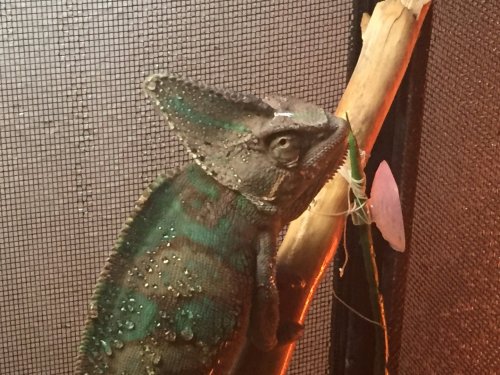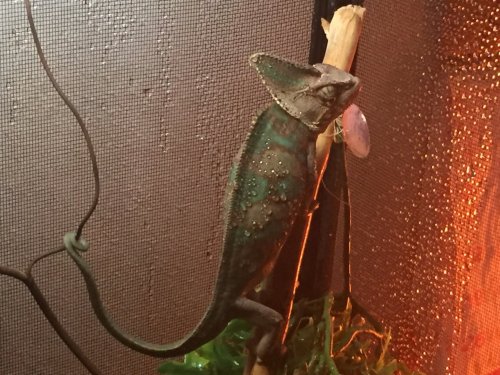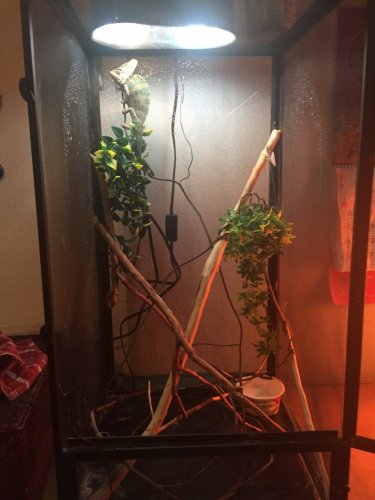Tomg
New Member
My 6 month old 62 gram male veild Cham has lost his appetite for the past 3 days. He went from eating 12 to 15 medium crickets a day, and a few worms (which he loved and went crazy for to not wanting to eat at all. He may have eaten something yesterday but I might have just not been able to find the three missing crickets in his cage (I didn't see him eat any). In the past 3 days I've only seen him eat one worm. He seemed to lose home appetite after I cleaned his cage (just used dishwasher soap and rinsed it very well). He hates being handled so maybe he got stressed from being taken out of his cage. Also he is due to shed but I don't see any signs of it. PS all the basic Cham care requirements are taken care of property; lights, water, dusting/gut loading, misting, heat, vitamins, weekly cleanings, etc. The only thing I'm not 100% sure about is the exact humidity levels as I don't have a gauge, but I mist twice a day. Also I've had him for 3 months and he's never lost his appetite before. I'm very worried and would appreciate any advise, Thanks.




